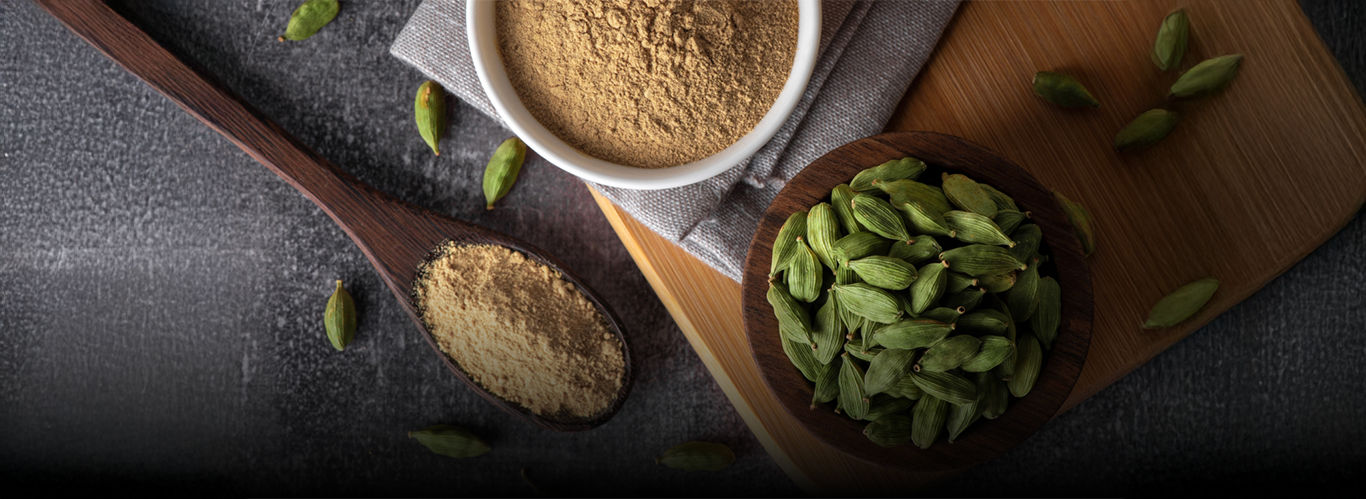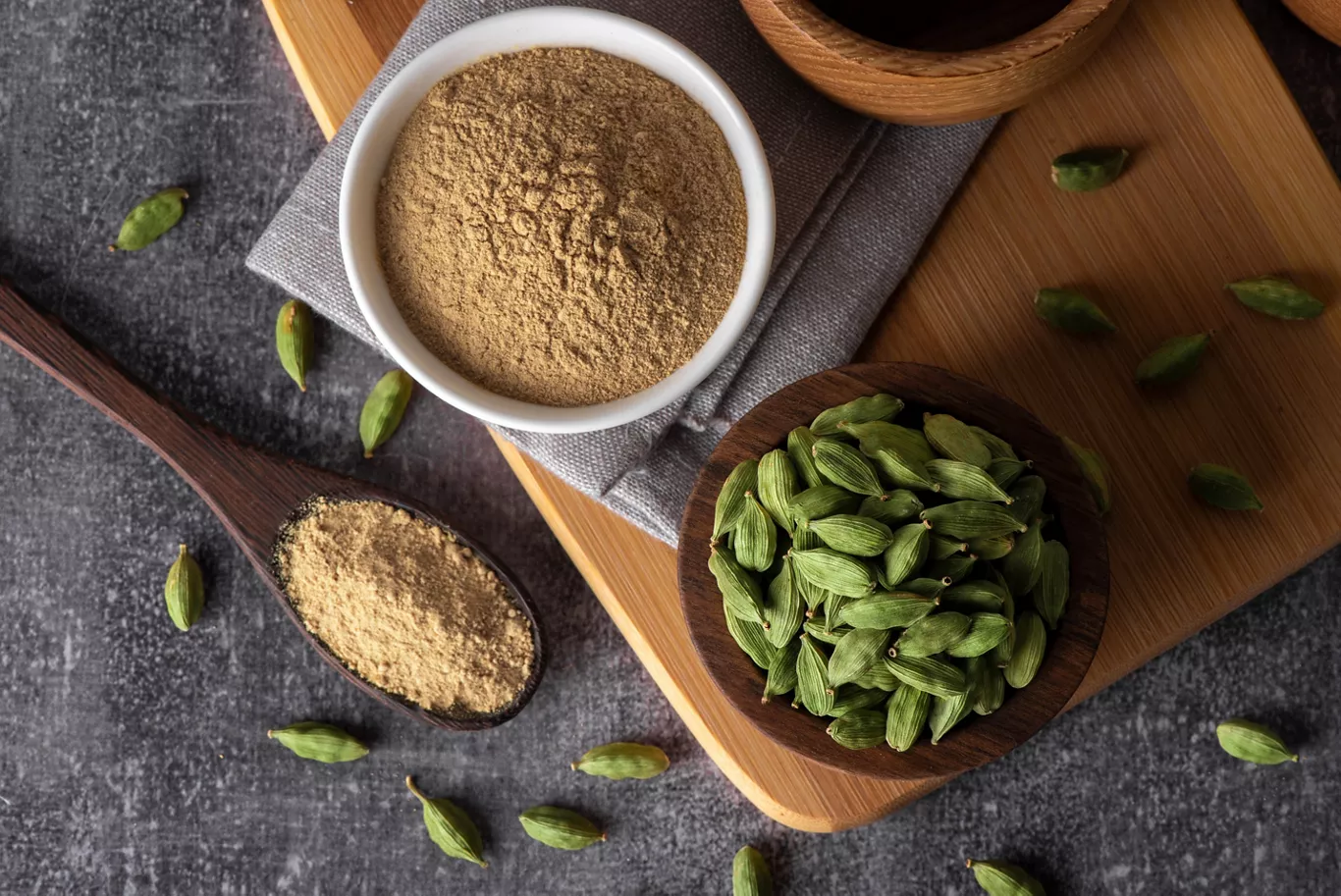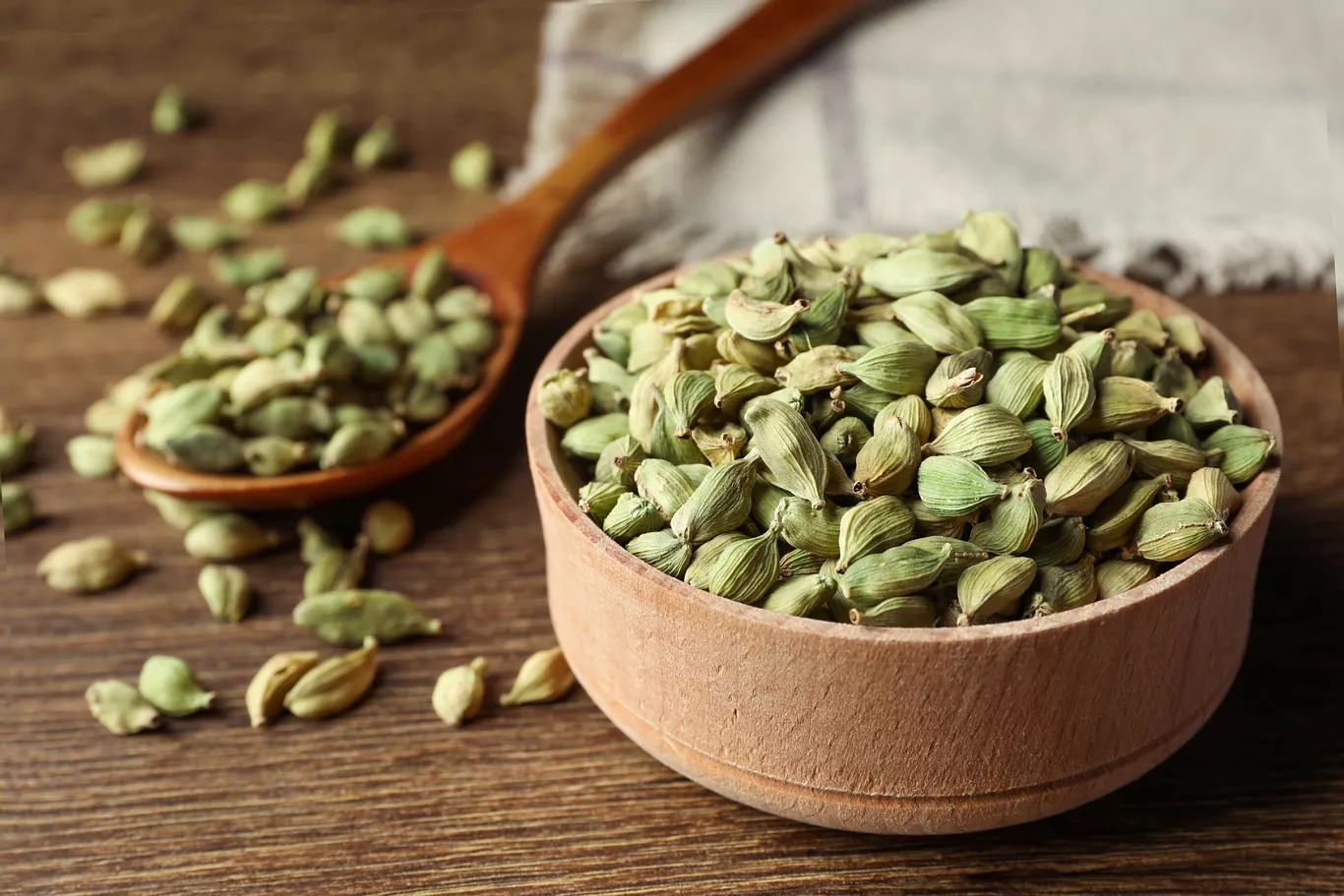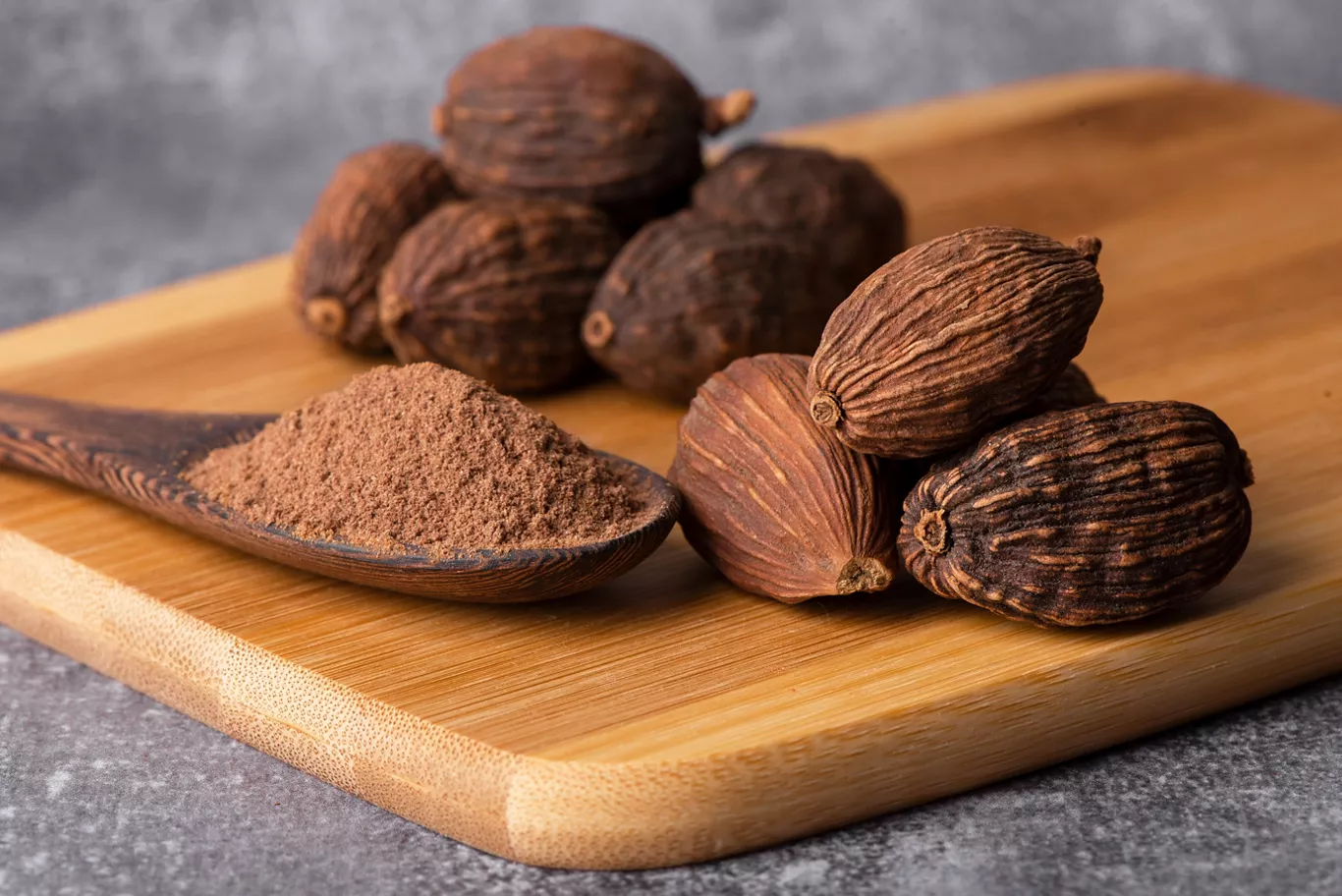In the vibrant tapestry of Indian cuisine, cardamom, or elaichi, is a spice that has been cherished for centuries. It holds a special place not only in the kitchen but also in the hearts of those who have grown up savouring its delicate and aromatic essence. The moment you crack open a pod of cardamom, its sweet and floral fragrance fills the air, evoking memories of childhood treats, festive feasts, and family gatherings. From lending a unique flavour to sweets and desserts to enhancing the taste of curries and beverages, cardamom’s versatility makes it an indispensable ingredient in Indian cooking.
No Indian kitchen is complete without a jar of this aromatic spice. Whether it's the green or black variety, whole or powdered, cardamom is used in myriad ways to elevate the flavour of dishes. The sight of elaichi pods simmering in milk or being pounded into a fine powder for dessert is a common scene in households across the country. It is more than just a spice; it is a symbol of tradition and warmth and an integral part of the culinary culture.
In this blog, we will explore the different types of cardamom, how to use them in cooking, and why this fragrant spice has remained a beloved staple in Indian kitchens for generations.
Types of Cardamom
Cardamom comes in two main varieties, each with its own distinct flavour profile and culinary uses. Understanding the differences between green and black cardamom, as well as the various forms in which they are available, can help you make the most of this versatile spice.
Green Cardamom (Choti Elaichi)
Green cardamom is the most commonly used variety in Indian cooking. The small, green pods contain tiny black seeds that are packed with flavour. It has a sweet, floral aroma and a slightly citrusy taste, making it perfect for both sweet and savoury dishes. Green cardamom is used in everything from desserts like kheer and gulab jamun to savoury dishes like biryanis and curries. It is also an essential ingredient in chai, lending its distinctive fragrance to the popular Indian tea.
Black Cardamom (Badi Elaichi)
Black cardamom, also known as badi elaichi, is larger, darker, and has a more robust, smoky flavor compared to its green counterpart. It is often used in savory dishes, particularly in rich, slow-cooked curries and meat dishes, where its bold flavor can stand up to other strong ingredients. Unlike green cardamom, black cardamom is rarely used in sweets due to its intense and earthy taste.
Seed vs. Powder
Cardamom can be used in various forms depending on the recipe and desired flavour intensity.
Whole Pods: Whole cardamom pods are typically used in dishes where the flavour needs to infuse slowly, such as biryanis, pulaos, and stews. The pods are usually added to hot oil or ghee at the beginning of cooking to release their aromatic oils.
Cardamom Seeds: The seeds inside the pods are often extracted and used when a more concentrated flavour is desired. They can be ground into a powder or used whole in spice blends.
Cardamom Powder: Ground cardamom is convenient and can be used quickly in recipes like desserts, chai, and certain curries. It disperses easily, making it ideal for baking and sweets where an even distribution of flavour is needed.
How to Use Cardamom in Cooking
Cardamom’s versatility allows it to be incorporated into a variety of dishes, enhancing both sweet and savoury flavours. Here’s how you can use this aromatic spice in different types of recipes:
Flavoring Sweets & Desserts
Cardamom is a star ingredient in many Indian desserts. Its sweet, floral notes complement the rich, creamy flavours of traditional sweets.
Kheer (Rice Pudding): A few crushed green cardamom pods added to simmering milk and rice can transform a simple kheer into a fragrant delight. The cardamom infuses the dessert with its signature aroma, making it a festive favourite.
Gulab Jamun: Cardamom powder is often mixed into the dough for gulab jamun, giving the soft, syrupy dumplings a warm and inviting flavour. It is also added to the sugar syrup to enhance the taste.
Sheer Khurma: This festive dessert made with vermicelli, milk, and dates is traditionally flavoured with green cardamom. The spice adds a delicate aroma that balances the sweetness of the dish.
Baking: Cardamom is also used to add a hint of spice to cakes, cookies, and breads. It pairs well with ingredients like nuts, dried fruits, and chocolate, making it a versatile addition to both Indian and Western desserts.
Beverages
Cardamom is a key ingredient in many Indian beverages, adding a layer of complexity and aroma.
Masala Chai: One of the most popular ways to use cardamom is in masala chai. Crushed green cardamom pods are simmered with black tea, milk, and other spices like cinnamon and ginger, creating a warm and comforting drink that is enjoyed across the country.
Elaichi Coffee: Adding a pinch of cardamom powder to your coffee can elevate the flavour, giving it a unique twist that is both refreshing and aromatic.
Thandai: A cooling drink made with milk, nuts, and spices, thandai often includes cardamom as a key ingredient. Its sweet and floral notes complement the richness of the drink, making it a popular choice during festivals like Holi.
Curries and Savory Dishes
While cardamom is often associated with sweets, it plays an equally important role in savoury dishes, especially in Indian cuisine.
Biryani: Green cardamom is a must-have in biryani recipes. The whole pods are sautéed with onions, meat, and rice, infusing the dish with a subtle sweetness that balances the spices and herbs.
Curries: Cardamom is used in various curries, particularly those with a creamy base, like korma. It adds depth and complexity to the gravy, enhancing the overall flavour of the dish.
Meat Dishes: Black cardamom is often used in robust meat dishes like Rogan Josh and Nihari. Its smoky flavour complements the rich, slow-cooked gravies, making the dishes more aromatic and flavorful.
Seasoning & Spice Blends
Cardamom is a key component in several spice blends and seasonings.
Garam Masala: Cardamom is an essential ingredient in garam masala, a versatile spice blend used in many Indian dishes. The ground seeds are combined with other spices like cumin, coriander, and cloves to create a warming, aromatic seasoning.
Chai Masala: Cardamom is a primary ingredient in chai masala, which is used to flavour tea. The blend typically includes cardamom, cinnamon, cloves, and ginger, creating a fragrant and spicy mix.
Paan Masala: A popular mouth freshener, paan masala often includes cardamom for its refreshing flavour. The seeds are mixed with other ingredients like fennel, areca nut, and sugar, making it a popular after-meal treat.
Baking
Cardamom’s sweet, floral notes make it an excellent addition to baked goods.
Cardamom Cake: Adding cardamom powder to cake batter gives the dessert a unique flavor that is both warm and aromatic. It pairs particularly well with ingredients like pistachios, almonds, and saffron.
Cookies & Breads: Cardamom is often used to bake Indian sweets like nankhatai (shortbread cookies) and Western-style bread and cookies. A hint of cardamom in the dough or batter can elevate the overall taste, making the baked goods more flavorful and fragrant.
Conclusion
Cardamom is more than just a spice in Indian kitchens—it is a tradition, a flavour that has been cherished for generations. Its versatile nature allows it to be used in a variety of dishes, from rich curries and fragrant biryanis to sweet desserts and aromatic beverages. The sight and smell of cardamom being pounded into powder or added to a simmering pot evoke a sense of nostalgia and comfort, reminding us of home and the warmth of family meals.
Whether you’re adding it to your morning chai or incorporating it into an elaborate biryani, cardamom brings a touch of elegance and depth to any dish. So, the next time you cook, reach for that jar of elaichi and let its aromatic magic transform your meal.
Head over to our website to learn more about our spices, and grab a pack of our whole or powdered Panch Phoron from any leading eCommerce platform to add a new flavour to your palette today.
FAQS
You can eat cardamom by simply chewing on the seeds to release their flavour. It is also commonly used in cooking and baking, where whole pods, seeds, or ground powder are added to dishes for their aromatic qualities.
Yes, cardamom can be used daily in small amounts. It is commonly added to tea, coffee, and various dishes for its delightful flavour and aroma.
Yes, you can drink Elaichii water daily. To make it, simply soak a few crushed cardamom pods in water overnight and drink it in the morning. It is a flavorful way to start your day.
Yes, you can eat elaichi directly by chewing on the seeds. It has a sweet and spicy flavor that can be enjoyed as a natural mouth freshener.



